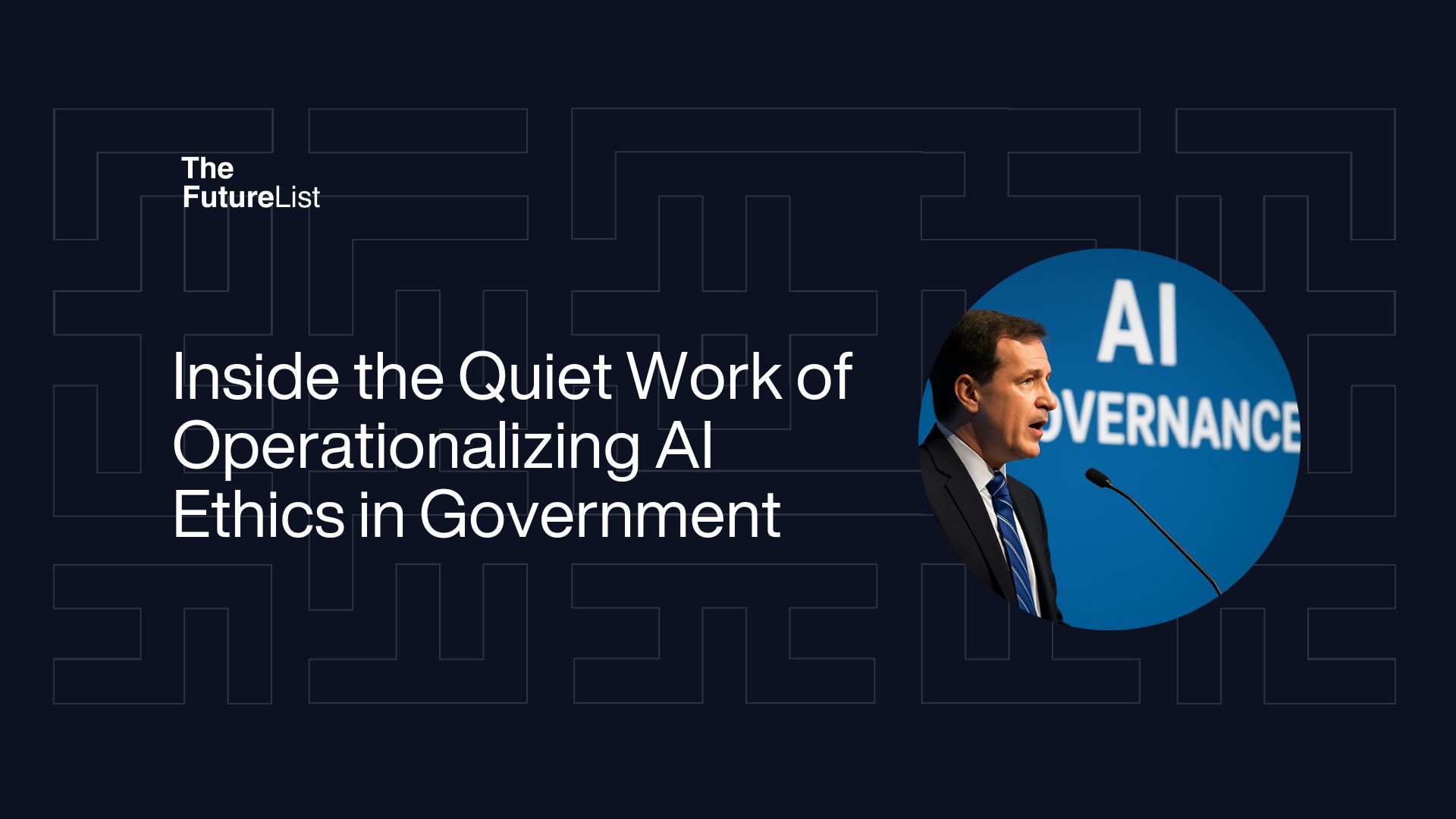
Inside the Quiet Work of Operationalizing AI Ethics in Government
By Eric Kamande
While the 2025 G7 summit in Italy drew headlines for its climate diplomacy and security pledges, one of its most consequential developments happened quietly: a coordinated push to turn AI principles into enforceable public governance mechanisms.
The G7 reaffirmed its commitment to the Hiroshima AI Process, the 2023 framework aimed at developing shared international guidelines for AI governance. But unlike past declarations, this year’s focus shifted from aspiration to application: deploying real-world standards, tools, and audit systems that can govern how public institutions use AI.
Why this matters
In 2024, only 39% of people globally trusted their governments to do what’s right (Eldeman). Meanwhile, public sector AI use is expanding, from resource allocation to predictive policing and benefits eligibility systems. Without robust safeguards, the use of opaque algorithms risks further eroding that fragile trust.
The G7’s latest move marks a turning point. It’s a recognition that AI governance cannot remain voluntary or reactive. It must be built into the everyday processes of government, just like data privacy and procurement checks are today.
The shift: AI ethics as public infrastructure
Instead of flashy AI labs or moonshot announcements, countries are now embedding ethics into the plumbing of government systems:
- Canada’s Algorithmic Impact Assessment requires agencies to assess AI tools before rollout, defining thresholds for risk, transparency, and human oversight.
- The UK’s Centre for Data Ethics and Innovation has issued practical guidance for AI procurement, ensuring vendors disclose model risks and explainability limitations.
- Estonia, often cited as a digital governance leader, has embedded audit logs into its public services, allowing citizens to trace how automated decisions affecting them are made.
These tools aren’t about slowing down innovation; they’re about protecting democratic legitimacy and legal rights in the AI era.
For the rest of the world
The G7’s approach offers a ready-made playbook for governments without the resources to design frameworks from scratch. Open-source tools like Canada’s AIA or the OECD’s AI Policy Observatory are already being adapted in Latin America and Africa.
At the same time, the global south faces unique challenges. Many countries remain excluded from standard-setting bodies, even as AI systems built elsewhere are deployed in their institutions. This raises critical questions of digital sovereignty and fairness: Who sets the rules, and who gets to challenge them?
For emerging economies, the G7’s direction creates an opportunity, but also a risk. Aligning with global norms may unlock funding and credibility, but blindly adopting foreign frameworks without contextual adaptation could replicate biases or institutional mismatch.
The takeaway: Seatbelts, not speed bumps
The G7 didn’t call for slowing down AI, it called for safer roads. That distinction matters.
Operationalizing ethics in government isn’t about compliance for its own sake. It’s about building the trust needed to scale digital services, ensure algorithmic accountability, and prevent exclusion or harm. And it’s becoming the baseline expectation for governments globally.
The decisions made in Rome won’t dominate headlines. But they might just shape the default architecture of public AI for the decade ahead.
Get innovation insights from The FutureList weekly. Subscribe to our newsletter here
Categories
- Agritech
- Artificial Intelligence
- Biotech
- Blockchain
- Climate Tech
- Data Infrastructure
- Edtech
- Events
- Fashion
- Fintech
- Healthtech
- Infrastructure
- Innovation Memos
- Innovation Scout Program
- Insight
- Insurtech
- Machine Learning
- Martech
- Mobility
- Music and Media
- Partner Offers
- Perks
- Procurement
- Proptech
- Retailtech
- Ridehailing
- Ridesharing
- Robotics
- Space Aviation
- Supply Chain
- Talent
- Telecoms
- Uncategorized
- Venture Capital
- Wastetech
- Women In Tech